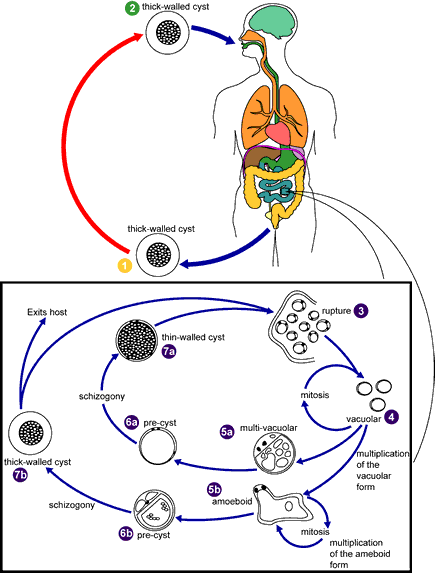The taxonomic classification of Blastocystis hominis is mired in controversy. It has been previously considered as yeasts, fungi, or ameboid, flagellated, or sporozoan protozoa. Recently, however, based on molecular studies, especially dealing with the sequence information on the complete SSUrRNA gene, B. hominis has been placed within an informal group, the stramenopiles (Silberman et al. 1996). Stramenopiles are defined, based on molecular phylogenies, as a heterogeneous evolutionary assemblage of unicellular and multicellular protists including brown algae, diatoms, chrysophytes, water molds, slime nets, etc. (Patterson, 1994). Cavalier-Smith (1998) considers stramenopiles to be identical to his infrakingdom Heterokonta under the kingdom Chromista. Therefore, according to Cavalier-Smith, B. hominis is a heterokontid chromista.

Knowledge of the life cycle and transmission is still under investigation, therefore this is a proposed life cycle for B. hominis. The classic form found in human stools is the cyst, which varies tremendously in size from 6 to 40 µm. The thick-walled cyst present in the stools is believed to be responsible for external transmission, possibly by the fecal-oral route through ingestion of contaminated water or food . The cysts infect epithelial cells of the digestive tract and multiply asexually. Vacuolar forms of the parasite give origin to multi vacuolar and ameboid forms. The multi-vacuolar develops into a pre-cyst that gives origin to a thin-walled cyst, thought to be responsible for autoinfection. The ameboid form gives origin to a pre-cyst, which develops into thick-walled cyst by schizogony. The thick-walled cyst is excreted in feces.
Life cycle image and information courtesy of DPDx.
For more information view the source: Center for Disease Control
Recommended Test: Full GI Panel
Recommended Product: Freedom Cleanse Restore Parasite Cleanse